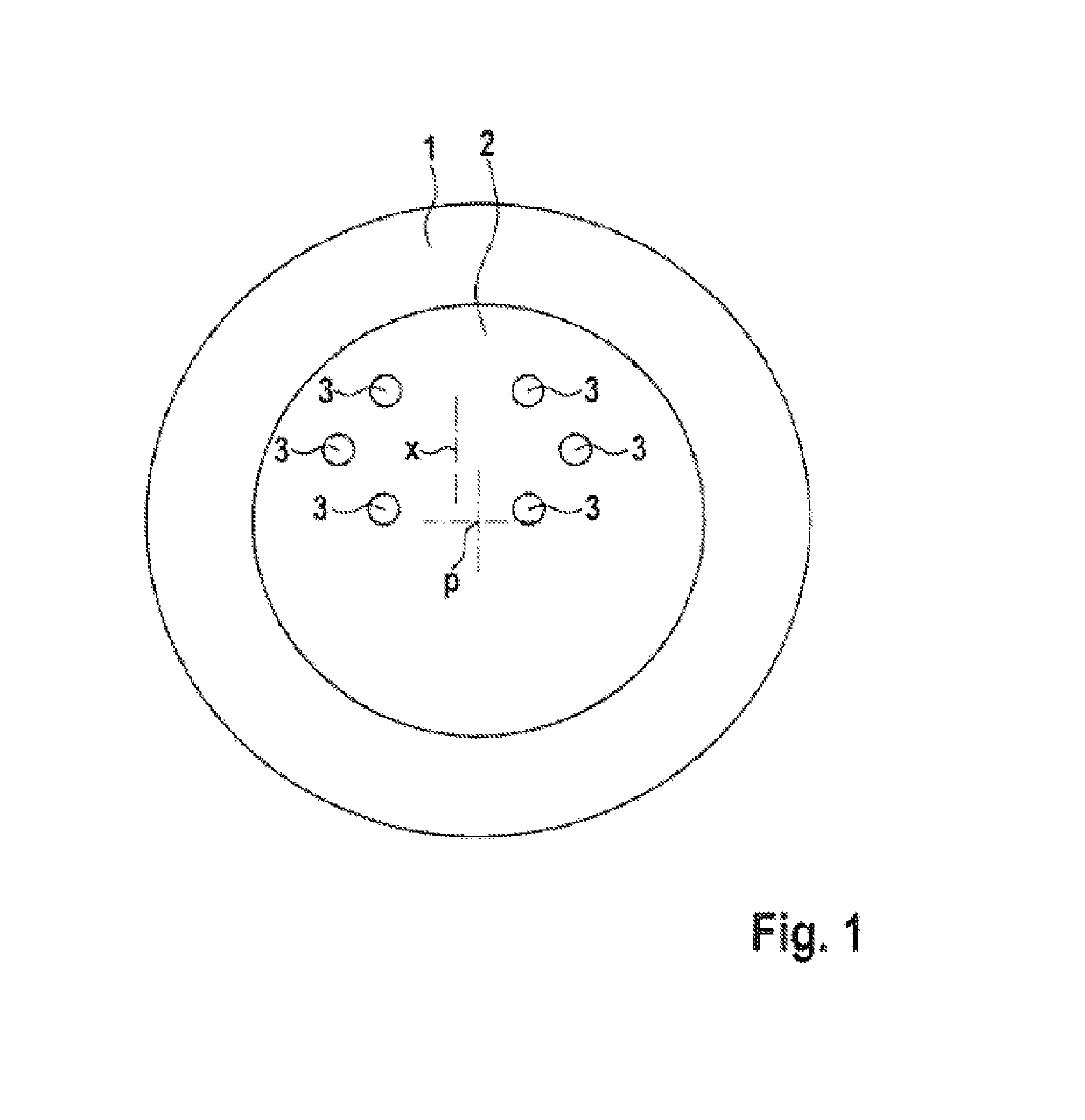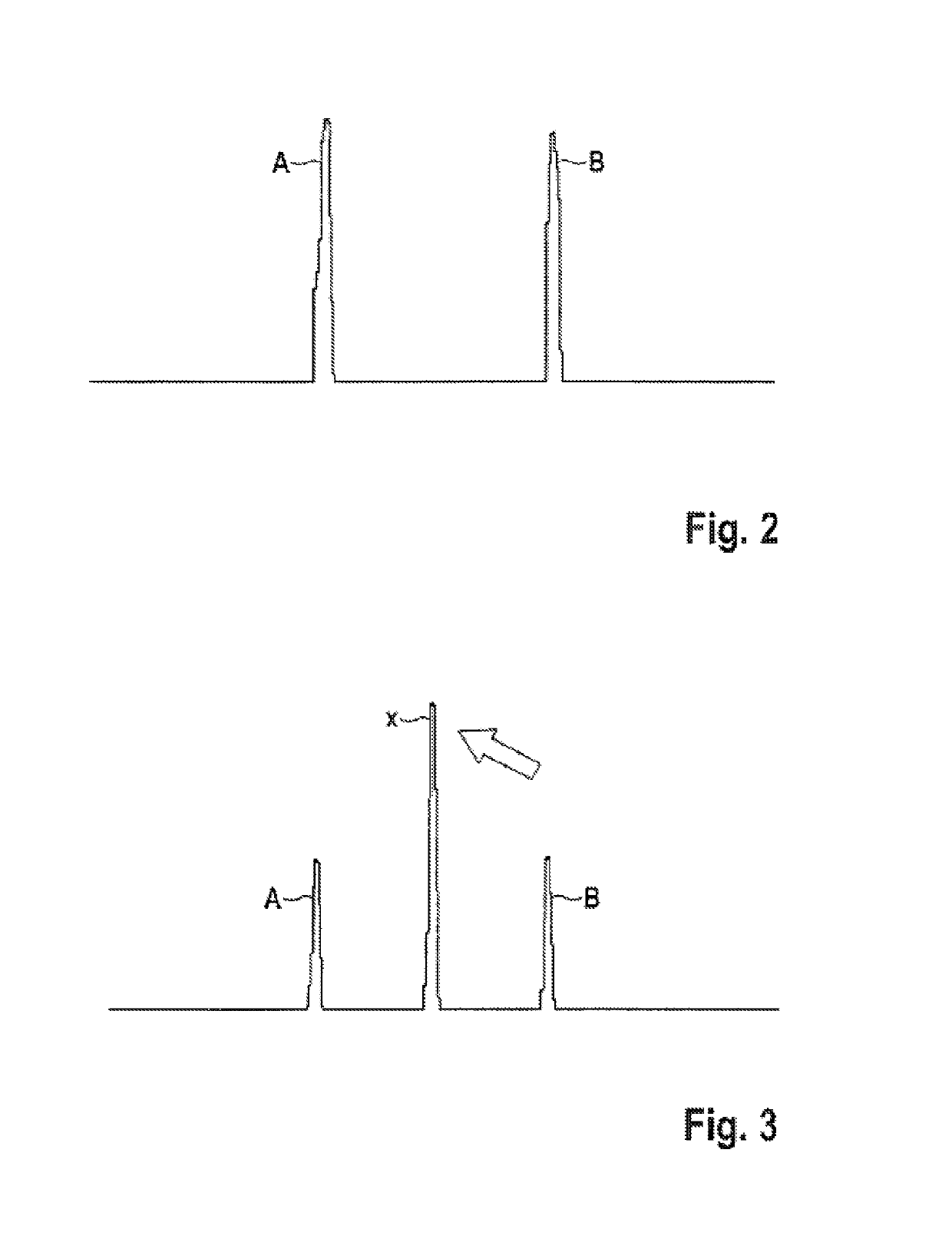Method for aligning a system, and system for detecting position data of at least one element in the front region of an eye
a front region and eye technology, applied in the field of system alignment and system alignment, can solve the problems of inability to follow up correction, local inaccuracy, and oculomotor system impair the integrity and continuity of the process, and achieve the effect of reliably generating diagnostic data sets and/or data sets
- Summary
- Abstract
- Description
- Claims
- Application Information
AI Technical Summary
Benefits of technology
Problems solved by technology
Method used
Image
Examples
Embodiment Construction
[0035]Example embodiments will now be described more fully with reference to the accompanying drawings.
[0036]FIG. 1 shows a schematic illustration of the front region of a human eye, in which a pupil 2 is surrounded by an iris 1. p denotes the center of the pupil. In a system according to the invention, light sources are symmetrically disposed around the main axis of the diagnostic and / or treatment system, resulting in a pattern of reflection points 3. The center x of the reflection points 3 corresponds approximately to the vertex of the eye. The position of the vertex of the eye is also dependent on the fixation and fixation axis. If the position of the pupil 2 or of the pupil center p in relation to the center x of the reflection points 3 is tracked, fixation can be monitored, and a loss of fixation resulting in misalignment of the eye can be detected.
[0037]This monitoring is useful in particular for systems that ascertain geometric information of the front region of the eye seque...
PUM
 Login to View More
Login to View More Abstract
Description
Claims
Application Information
 Login to View More
Login to View More - R&D
- Intellectual Property
- Life Sciences
- Materials
- Tech Scout
- Unparalleled Data Quality
- Higher Quality Content
- 60% Fewer Hallucinations
Browse by: Latest US Patents, China's latest patents, Technical Efficacy Thesaurus, Application Domain, Technology Topic, Popular Technical Reports.
© 2025 PatSnap. All rights reserved.Legal|Privacy policy|Modern Slavery Act Transparency Statement|Sitemap|About US| Contact US: help@patsnap.com



